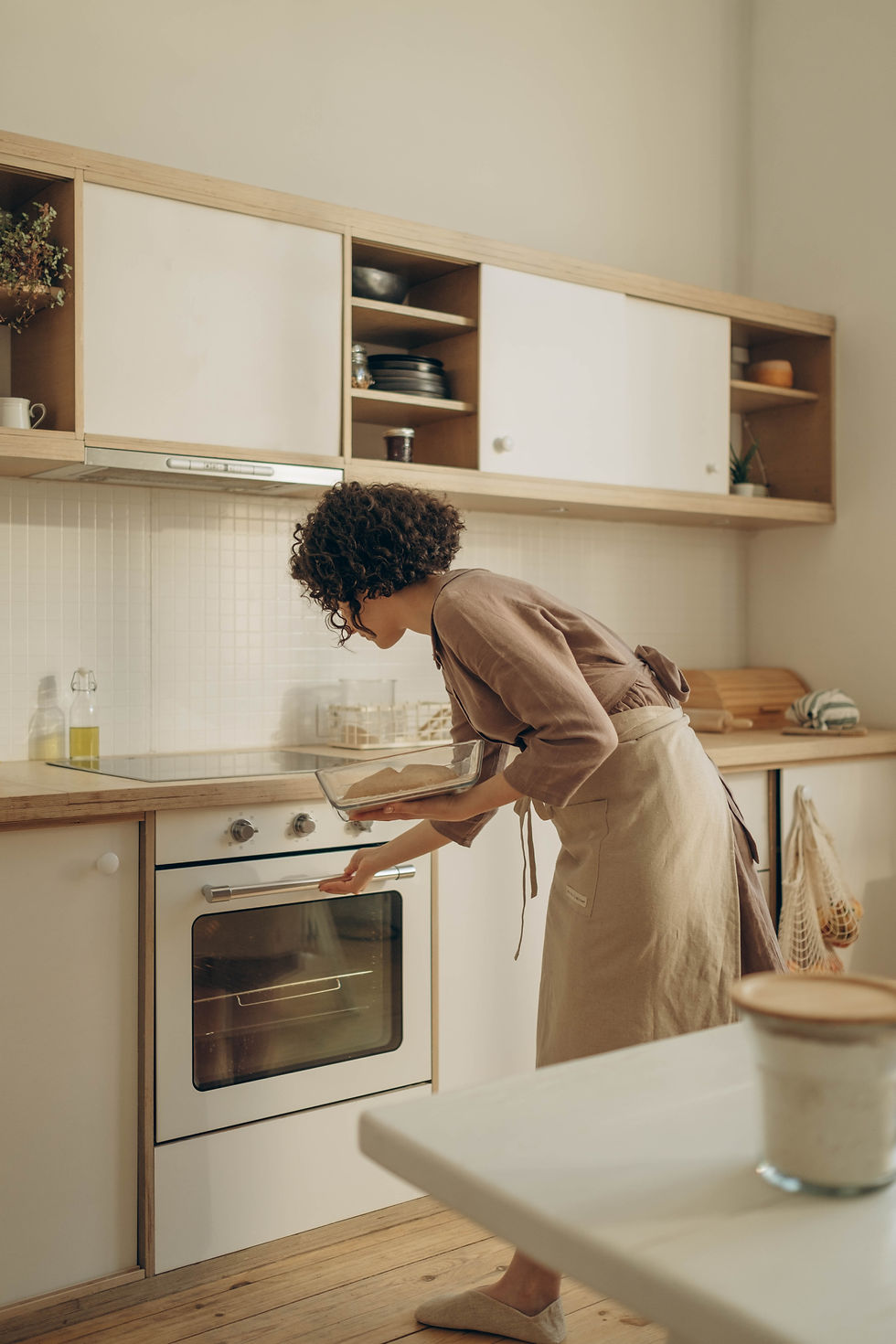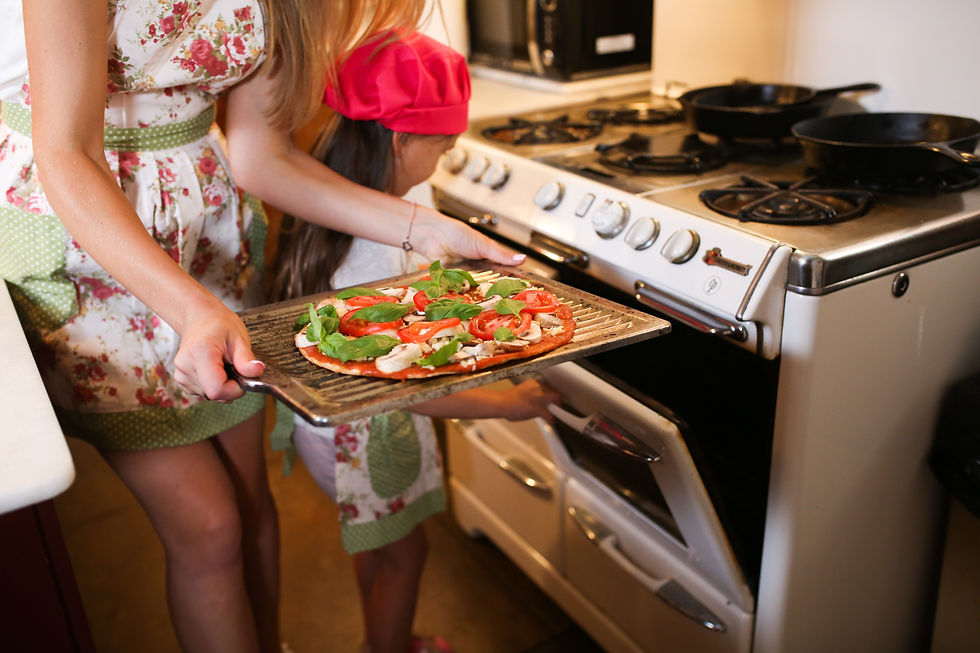What Precautions Should Be Taken When Using A Convection Oven?
- billchaver
- Jul 3, 2023
- 5 min read
Are you tired of using a traditional oven that takes forever to cook your food? It's time to upgrade to a convection oven! This modern appliance uses advanced technology to distribute heat evenly, resulting in faster and more efficient cooking. However, as with any kitchen equipment, there are certain precautions you need to take when using it. In this blog post, we'll go over everything you need to know about cooking with a convection oven and how you can use it safely while getting the best possible results. So let's get started!
What is a convection oven?
A convection oven is a kitchen appliance that uses a fan to circulate hot air around the food, allowing it to cook more evenly and quickly. Unlike traditional ovens that rely on radiant heat from the top and bottom heating elements, convection ovens use a third heating element located at the back of the oven. When you turn on a convection oven, hot air is distributed evenly throughout the interior space by the fan. This means that your food will be cooked more uniformly regardless of its position in the oven. Additionally, convection cooking times are often shorter than traditional cooking times since there's no need to preheat or adjust temperatures. Convection ovens come in different sizes and styles, ranging from small countertop models to large built-in units. Some even have advanced features like self-cleaning modes or steam settings for baking bread.
click here for more: https://bestconvectionovenforsublimation.com/ Using a convection oven can help you save time and achieve better results when cooking your favorite dishes. But before you start using one, make sure you understand how they work and take precautions to avoid any potential hazards while operating them.
How does a convection oven work?
A convection oven is a kitchen appliance that uses a fan and exhaust system to circulate hot air around the food. This process results in faster and more even cooking than traditional ovens. The fan inside the oven helps distribute heat evenly throughout, which reduces cooking time by up to 25%. The exhaust system removes moisture from the oven, which allows for crispy and golden-brown finishes on your food. Convection ovens also have different settings for baking, roasting, broiling, or warming up dishes. Each setting has its own temperature range and time limits to ensure perfect cooking results every time. One of the most significant advantages of using a convection oven is that it can cook multiple dishes at once without affecting their quality or taste. You can set different temperatures and times for each dish depending on their requirements. However, you should keep in mind that some recipes may need adjustments when cooked in a convection oven as they tend to cook faster than regular ovens. It's always best to follow recipe instructions closely before attempting any modifications. Understanding how your convection oven works will help you make the most out of this fantastic appliance while ensuring delicious meals with less effort.

Pros and cons of using a convection oven
A convection oven is a popular choice amongst home cooks and professional chefs alike. However, like any kitchen appliance, it has its pros and cons. One of the biggest advantages of using a convection oven is that it cooks food faster than traditional ovens. This is because the fan inside circulates hot air evenly around the food, reducing cooking times by up to 25%. Additionally, this method of cooking can result in more even browning and crispness on foods such as roasted vegetables or baked goods. Another pro of using a convection oven is that it can cook multiple dishes at once without transferring flavors between them. Due to the even distribution of heat throughout the oven, you won't have to worry about one dish cooking faster than another or having different temperature zones within your oven. However, there are also some cons to consider when using a convection oven. One downside is that they tend to be more expensive than traditional ovens due to their added features and technology. Additionally, if not used properly or with caution on delicate items such as cakes or soufflés ,a convection oven can dry out certain foods due to its high-speed airflow. While there are pros and cons associated with using a convection oven,it ultimately comes down to personal preference based on your needs in the kitchen.
Precautions to take when using a convection oven
When using a convection oven, there are some precautions that you should take to ensure your safety and the efficiency of the cooking process. First and foremost, make sure that you read the manufacturer's instructions carefully before operating the oven. One important thing to keep in mind is that convection ovens cook food faster than traditional ovens due to their circulation of hot air. This means that you may need to adjust your cooking times or temperatures accordingly. Another precaution to take when using a convection oven is to use heat-resistant gloves or mitts when handling hot dishes or removing them from the oven. It's also essential never to place anything on top of the oven while it is running, as this can obstruct airflow and cause overheating. Additionally, always use proper cookware designed for convection ovens, such as shallow baking pans with low sides. Using deep dishes can impede airflow and lead to uneven cooking results. By taking these simple precautions when using a convection oven, you can enjoy all its benefits without compromising your safety or cooking quality.
Tips for using a convection oven
Using a convection oven can be intimidating at first, but with some practice and the right tips, you'll be cooking like a pro in no time. Here are some helpful tips to get you started: 1. Preheat your oven: Unlike traditional ovens, it's important to preheat your convection oven for best results. 2. Use the right cookware: Convection ovens work by circulating hot air around the food, so it's important to use cookware that allows for proper airflow. Avoid covering dishes with foil or using baking sheets with high sides. 3. Adjust cooking times and temperatures: Because of the way convection ovens work, you'll need to adjust your cooking times and temperatures accordingly. As a general rule of thumb, decrease the temperature by 25 degrees Fahrenheit and reduce cooking time by about 25%. 4. Rotate dishes halfway through cooking: To ensure even browning and crispness on all sides of your dish, rotate it halfway through cooking. 5. Don't overcrowd your oven: It's tempting to try to fit as much as possible into your convection oven at once, but this can actually hinder its performance. Leave plenty of space between dishes for optimal airflow. By following these simple tips, you'll be able to use your convection oven confidently and create delicious meals every time!
Conclusion
A convection oven can be a great addition to your kitchen appliances. It cooks food faster and more evenly than a traditional oven, which can save you time and energy. However, it's important to take precautions when using this type of oven to prevent accidents or damage to the appliance. Always follow the manufacturer's instructions for use and maintenance of your convection oven. Take care not to overload it with too much food or cookware that is not suitable for use in a convection oven. And remember, while a convection oven offers many benefits, it may not always be the best option for every recipe. By following these precautions and tips for using a convection oven, you can enjoy all its advantages without any risks or mishaps along the way. Happy cooking!



Comentarios